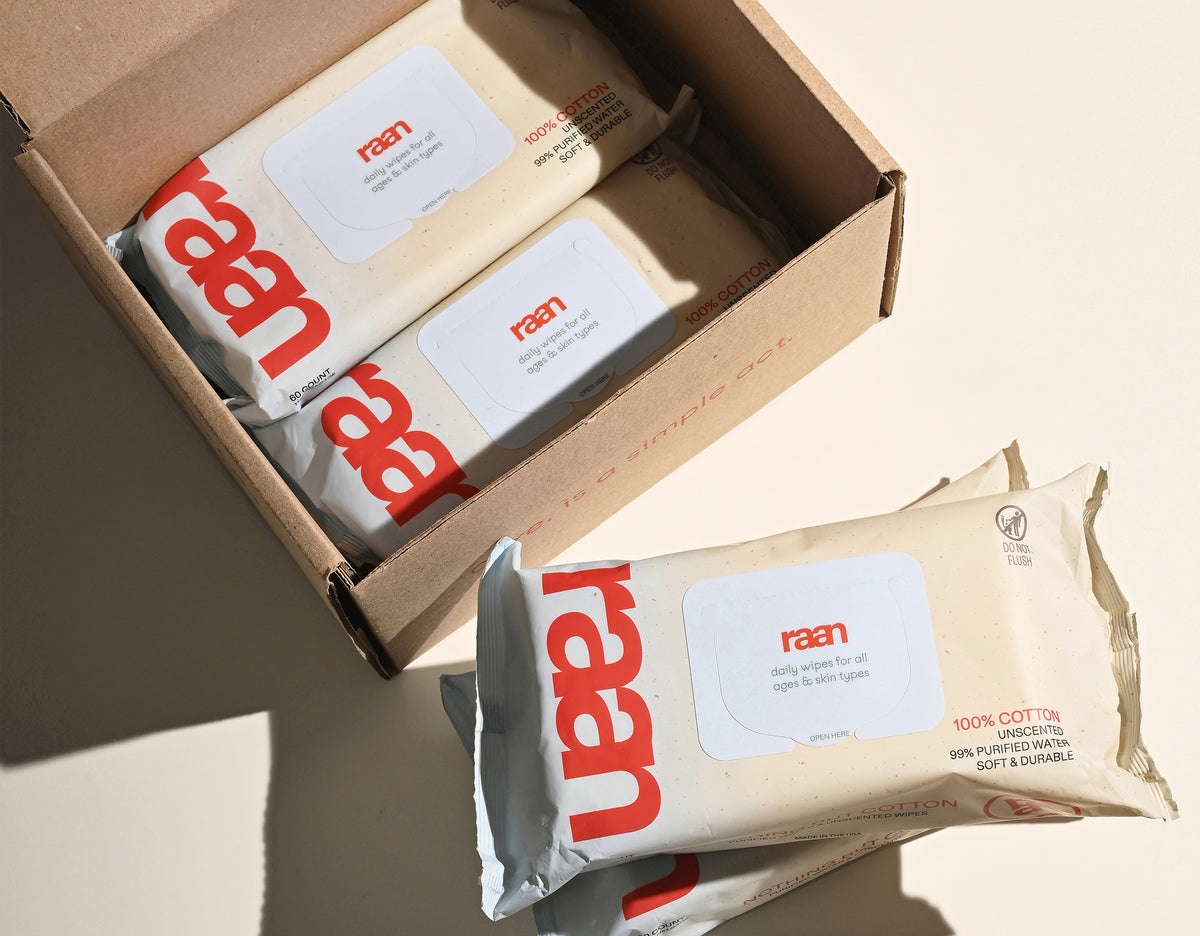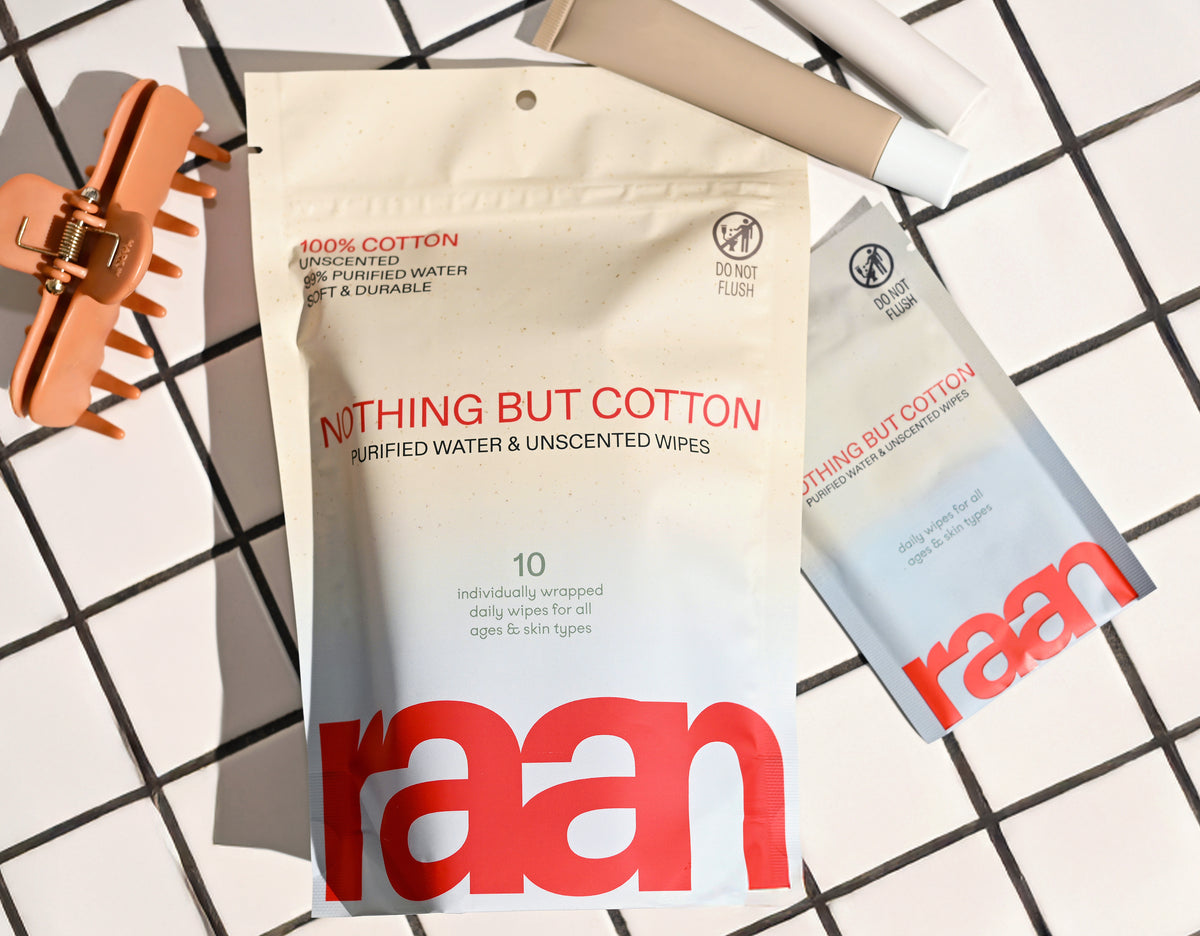Key Takeaways
- Choosing the best baby wipes for newborns requires prioritizing safety and simplicity over marketing claims.
- Materials used in baby wipes should be gentle and non-irritating to protect delicate newborn skin.
- Newborns can have up to 12 diaper changes daily, making the quality of wipes especially important.
- Effective baby wipes serve as a frequent and sensitive touchpoint for newborn care.
Table of Contents
- What Makes Baby Wipes "Best" for Newborns?
- Why Wipes Matter: Everyday Scenarios Where Newborns Need Gentle Care
- Ingredient Deep Dive: What's Really Inside the Safest Baby Wipes?
- Material Science: How Wipe Texture, Thickness, and Fabrics Affect Skin Safety
- Water Content and Moisture: Achieving the Ideal Clean Without Overdoing It
- Unscented vs. Scented Wipes: Truths About Fragrance Sensitivity in Newborns
- Certifications & Trust Signals: Reading Past the "Clean" Hype
- Environmental Impact: Doing Better for Your Baby, And The Planet
- Hands-On Comparison: How Do Leading Brands Stack Up
- Making the Choice: Step-by-Step Guide to Picking the Best Wipe
- Real-Life Application: Practical Tips for Using Baby Wipes Safely
- Beyond the Nursery: Wipes for All Ages and Everyday Messes
Best Baby Wipes for Newborns, Your Real-World Guide to Safe, Simple, Science-Backed Care
Finding the best baby wipes for newborns means cutting through marketing claims to focus on what actually matters: safety, simplicity, and materials that won't irritate delicate skin. With newborns experiencing up to 12 diaper changes daily, the wipes you choose become a constant touchpoint with their most sensitive areas. The Only Unbleached, 100% Cotton Baby Wipe for Sensitive Skin is a standout choice for parents who want to avoid unnecessary chemicals and synthetic fibers.
The reality? Most conventional wipes contain plastic fibers, synthetic preservatives, and vague "fragrance" blends that can trigger reactions in developing skin. The best options prioritize unbleached, natural materials with transparent ingredient lists, like Raan's 100% cotton wipes with just five EWG-verified ingredients. For on-the-go parents, Unbleached, 100% Cotton Pocket Wipe for Sensitive Skin offers convenient, individually wrapped wipes that maintain the same high standards.
For those looking to try a variety of options, the mess-ready pack provides a curated selection perfect for tackling every type of newborn mess. This approach ensures you have the right wipe for every scenario, from diaper changes to quick cleanups.
What Makes Baby Wipes "Best" for Newborns?
Newborn skin is 40% thinner than adult skin and lacks the protective barrier that develops over the first year. This means every ingredient and material matters more than with older children or adults.
"Best" translates to proven gentleness through third-party testing, transparent ingredient disclosure, and materials that won't leave residue or cause micro-abrasions. The American Academy of Pediatrics recommends fragrance-free products with minimal processing for newborns' first months.
Raan exemplifies these standards with unbleached, 100% cotton construction and a five-ingredient formula that's EWG-verified. Each component serves a clear purpose: purified water for cleaning, organic aloe for moisture, and food-grade preservatives for safety, nothing hidden, nothing unnecessary.
Why Wipes Matter: Everyday Scenarios Where Newborns Need Gentle Care

Beyond diaper changes, newborns create surprisingly diverse messes. Spit-up during feeding, milk residue around the mouth, and sticky hands from reflexive grasping all require immediate, gentle cleaning that won't disrupt their delicate skin barrier.
Real-world wipe moments in your first month:
- Diaper blowouts that require extensive cleanup
- Post-feeding face and hand cleaning
- Quick hand sanitization before handling baby
- Cleaning spit-up from neck folds and clothing
- On-the-go cleanups during outings
Each scenario demands a wipe that cleans effectively without leaving soap residue, synthetic fragrances, or plastic microfibers on sensitive skin. The frequency, often 15-20 wipe uses daily, makes material quality and ingredient purity non-negotiable factors in preventing cumulative irritation.
Ingredient Deep Dive: What's Really Inside the Safest Baby Wipes?
The best baby wipes for newborns contain ingredients you can pronounce and purposes you can understand. Conventional wipes often list 15+ components, many with multiple chemical names for the same synthetic preservative or texture enhancer.
| Ingredient | Purpose | Safety Profile |
|---|---|---|
| Purified Water (99%) | Primary cleaning agent | Gentle, universally safe |
| Sodium Benzoate | Food-grade preservation | FDA-approved, minimal irritation risk |
| Potassium Sorbate | Prevents bacterial growth | Used in baby food, EWG-verified |
| Organic Aloe | Skin conditioning, moisture | Anti-inflammatory, soothing |
| Citric Acid | pH balance (5.5-6.5) | Natural, maintains skin barrier |
This transparency eliminates guesswork. You know exactly what touches your baby's skin and why it's there. Contrast this with wipes containing "fragrance" (potentially 100+ undisclosed chemicals), parabens, or alcohol-based preservatives that can disrupt developing skin barriers.
EWG verification means each ingredient scores low on their hazard scale, with independent testing confirming safety claims. It's the difference between marketing promises and verified protection. For more on this topic, see our guide to best baby wipes for sensitive skin.
Material Science: How Wipe Texture, Thickness, and Fabrics Affect Skin Safety
The base material determines everything from cleaning effectiveness to irritation risk. Most conventional wipes use plastic-fiber blends (polyester, polypropylene) that create micro-abrasions on delicate skin while leaving synthetic residue.
Unbleached, 100% cotton offers superior gentleness through its natural fiber structure. Cotton's absorbent properties hold moisture evenly without creating soggy spots or dry patches that can scratch during use.
Material Comparison:
- Synthetic fibers: Cheaper, more durable, but can irritate sensitive skin
- Cotton blends: Moderate softness, some plastic content remains
- 100% cotton: Maximum gentleness, biodegradable, no synthetic residue
Thickness matters beyond durability. Proper weight (measured in GSM - grams per square meter) ensures the wipe won't tear during use while maintaining flexibility for gentle cleaning. Raan's cotton construction provides optimal thickness without the stiffness common in heavily processed alternatives.
Texture should be smooth enough for face cleaning yet effective for diaper messes. The natural weave of unbleached cotton achieves this balance without chemical texturizing agents that can trigger reactions.
Water Content and Moisture: Achieving the Ideal Clean Without Overdoing It

The "99% water" claim on many wipe packages can be misleading. This percentage often includes synthetic carriers and moisture-retention chemicals that aren't technically water but help achieve the high percentage for marketing purposes.
Optimal moisture means effective cleaning without leaving skin soggy or creating bacterial growth conditions. The best baby wipes for newborns maintain consistent wetness throughout the pack without over-saturation that can cause skin maceration, softening that makes newborn skin more vulnerable to irritation.
Raan achieves this balance through measured formulation and packaging that preserves moisture without excess. The unbleached cotton naturally regulates liquid distribution, preventing the pooling common in synthetic wipes while ensuring each wipe maintains cleaning effectiveness from first to last use. If you're just starting out, the starter set is a great way to experience different pack sizes and formats for your needs.
At-Home Wetness Test: A properly moistened wipe should feel damp but not drip when lifted. It should glide smoothly across skin without dragging or leaving visible moisture trails.
Unscented vs. Scented Wipes: Truths About Fragrance Sensitivity in Newborns
Fragrance represents one of the top allergen risks for newborn skin. The term "fragrance" on ingredient lists can legally hide up to 100+ individual chemical compounds, many untested for safety on developing skin barriers.
Research from the American Contact Dermatitis Society shows fragrance allergies affect up to 15% of the population, with newborns showing higher sensitivity rates due to their underdeveloped skin barriers. Even "natural" fragrances can trigger reactions in sensitive individuals.
| Aspect | Scented Wipes | Unscented Wipes |
|---|---|---|
| Allergen Risk | Higher due to fragrance compounds | Minimal, transparent ingredients |
| Ingredient Disclosure | Often vague ("fragrance") | Complete transparency possible |
| Skin Barrier Impact | May disrupt natural pH balance | Maintains skin's protective function |
Raan's fragrance-free approach eliminates this uncertainty entirely. Without synthetic scents masking the natural, clean smell of cotton and purified water, parents can focus on effective cleaning without fragrance-related skin reactions or respiratory irritation.
Certifications & Trust Signals: Reading Past the "Clean" Hype
Third-party certifications provide objective validation beyond marketing claims. EWG Verified means independent testing confirms each ingredient meets strict safety standards, while generic "dermatologist tested" claims often lack specificity about testing scope or results.
Meaningful certifications for newborn wipes include EWG Verified (ingredient safety), Cruelty-Free certification (ethical testing), and Natural Cotton seals (material purity). These represent measurable standards rather than self-declared marketing terms.
Certification Checklist:
- Look for specific certifying organization names, not just logos
- Verify certifications on the organization's official database
- Prioritize safety certifications (EWG) over marketing awards
- Check certification dates for current validity
Raan's 2025 National Parenting Product Awards and Baby Innovation Award recognition reflects real-world parent testing and expert evaluation. Combined with EWG verification, these credentials offer measurable assurance beyond typical "clean" marketing language.
Environmental Impact: Doing Better for Your Baby, And The Planet

Biodegradable and compostable aren't interchangeable terms. Biodegradable means natural breakdown over time, while compostable requires specific conditions and timeframes. Most conventional wipes contain plastic fibers that prevent true biodegradation, regardless of packaging claims.
Raan's packaging innovation reduces plastic waste by 70% compared to standard hard-lid containers, using a resealable pouch with 35% post-consumer recycled content. The 100% recyclable boxes complete the sustainable packaging approach without compromising product freshness or convenience.
Practical eco-actions with newborn wipes:
- Choose 100% cotton construction over plastic-fiber blends
- Dispose of used wipes in regular trash, not toilets
- Recycle packaging according to local guidelines
- Buy appropriate pack sizes to minimize waste
- Store properly to maintain effectiveness and prevent premature disposal
These choices matter when multiplied across 3,000+ wipes used in a baby's first year. The environmental impact of material selection and packaging becomes significant at this usage scale. For more on sustainable and gentle options, read our article on best wipes for delicate skin care.
Hands-On Comparison: How Do Leading Brands Stack Up
Real parents need real data. Here's how the best baby wipes for newborns compare across materials, ingredients, and transparency, the factors that actually matter for daily use.
| Brand | Material | Key Ingredients | Certifications | Transparency |
|---|---|---|---|---|
| Raan | 100% unbleached cotton | 99% water, organic aloe, food-grade preservatives | EWG Verified, Natural Cotton, Women Owned | Full ingredient disclosure, manufacturing details |
| Huggies Natural Care | Plant-based fibers | 99% water, aloe, vitamin E | Hypoallergenic tested | Limited ingredient details |
| Pampers Sensitive | Soft grip texture | 99% water, mild cleansers | Dermatologist tested | General ingredient categories |
| Millie Moon Sensitive | Bamboo viscose blend | 99.9% water, chamomile | Pediatrician approved | Partial ingredient listing |
| Kirkland Signature | Multi-layer fabric | Purified water, mild soap | Hypoallergenic claim | Basic ingredient information |
Raan stands apart through material science, unbleached, 100% cotton eliminates plastic fibers found in conventional wipes. Our EWG verification means every ingredient meets the strictest safety standards, while complete transparency lets you know exactly what touches your newborn's skin.
Other brands rely on "plant-based" or "natural" claims without specifying fiber content or manufacturing processes. This vagueness matters when you're using 8-10 wipes daily on delicate newborn skin. For a broader look at the market, see our overview of best baby wipes.
Making the Choice: Step-by-Step Guide to Picking the Best Wipe

Skip the guesswork. Here's your systematic approach to finding best baby wipes for newborns that work for your specific situation:
5-Step Selection Framework
- Check the ingredient list first, Look for water as the primary ingredient, avoid alcohol, parabens, and unnamed "cleansing agents"
- Verify material composition, Confirm cotton content or fiber type; avoid vague "soft fabric" descriptions
- Test moisture level, Squeeze a wipe; it should feel damp but not dripping
- Assess thickness and durability, Pull gently; quality wipes shouldn't tear with normal use
- Start with small quantities, Buy single packs before committing to bulk purchases
Troubleshooting Common Issues
If irritation occurs: Stop use immediately, switch to water and soft cloth for 24-48 hours, then try a different brand with fewer ingredients.
If wipes dry out quickly: Check packaging seal, store upside down, or consider brands with better moisture retention like Raan's sealed pouch design.
If cleanup isn't effective: You may need thicker wipes or higher water content, thin, barely-damp wipes require multiple uses and more rubbing.
Watch for skin changes during the first week of use. Healthy newborn skin should remain smooth and consistent in color after wipe use.
Real-Life Application: Practical Tips for Using Baby Wipes Safely
Proper technique matters as much as product choice. Here's how to maximize safety and effectiveness:
Essential Usage Rules
- One direction only, Always wipe front to back during diaper changes
- Gentle pressure, Let moisture do the work; avoid scrubbing delicate skin
- Fresh wipe for face, Never use the same wipe for diaper area and face cleaning
- Pat dry when possible, Allow air drying for 30 seconds before applying fresh diaper
- Room temperature storage, Cold wipes can shock newborn skin; warm between hands if needed
Storage and Freshness
Keep wipes sealed immediately after use. Raan's resealable pouch maintains moisture for weeks, while hard-plastic containers can trap bacteria if not cleaned regularly.
For travel, transfer a few wipes to a small sealed container rather than carrying full packs. This prevents the entire supply from drying out if the seal breaks.
Beyond the Nursery: Wipes for All Ages and Everyday Messes
The best baby wipes for newborns shouldn't be limited to diaper changes. Quality wipes like Raan's serve the entire household:
Multi-Generational Applications
- Skincare routine, Gentle enough for removing makeup or refreshing face
- Pet care, Safe for cleaning paws and fur without harsh chemicals
- Quick cleanups, Sticky hands, spilled snacks, car interior maintenance
- Travel essential, TSA-friendly, compact cleaning for flights and hotels
- Gym bag staple, Post-workout refresh
For more insights on choosing the right wipes for newborns, you may also find our article on best wipes for newborn helpful. And for a comprehensive review of infant skin care, see this peer-reviewed study on newborn skin health.
Frequently Asked Questions
What ingredients should I look for to ensure baby wipes are safe and gentle for newborn skin?
Look for wipes with a minimalist, transparent ingredient list featuring mostly purified water and gentle moisturizers like organic aloe. Avoid synthetic preservatives and fragrances. Food-grade preservatives such as sodium benzoate and potassium sorbate are safe choices that help maintain freshness without irritation.
Why is it important to choose unscented and unbleached baby wipes for newborns?
Unscented wipes reduce the risk of irritation or allergic reactions on sensitive newborn skin, which can be triggered by fragrances. Unbleached, 100% cotton wipes avoid harsh chemicals and plastic fibers, providing a softer, more natural touch that respects delicate skin’s needs.
How do the materials and texture of baby wipes affect the safety and comfort of my newborn's skin?
Materials like unbleached, 100% cotton are breathable and gentle, minimizing friction and irritation. The texture and thickness should be balanced, thick enough to clean effectively but soft enough to avoid abrasion, ensuring comfort during frequent use on sensitive skin.
What factors should I consider when selecting baby wipes for frequent diaper changes throughout the day?
Choose wipes that are gentle, unscented, and made from natural materials to prevent irritation from repeated contact. Look for balanced moisture content to clean without over-wetting, and packaging that supports convenience and freshness, especially when you’re changing diapers up to 12 times daily.






